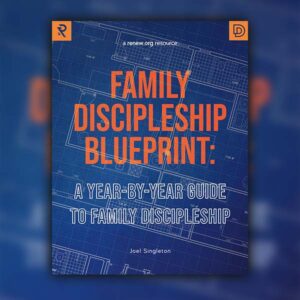How to Reach Middle School Students for Christ

When I began in youth ministry over thirty years ago, the statistics were compelling. I don’t think they’ve changed much. Here’s what was true then.
Roughly 90% of those who trust Christ as their Savior in the US will make that decision by the age of 21, before they graduate from college.
About 85% of those who trust Christ as their Savior in the US will make that decision by the age of 18, by the time they graduate from high school.
Amazingly, 80% of those who trust Christ as Savior in the US will make that decision by the age of 14, by the time they complete middle school.
Here’s the simple truth. If we don’t reach someone with the gospel before they finish middle school, the likelihood of them putting their faith in Christ decreases significantly.
When I shared this at a youth ministry training event twenty years ago, one of the youth pastors was so convicted he went home and spoke with the elders at his church. It had been their staffing priority for the youth pastor to be given budget funds to hire an intern who would run the middle school program. It took some convincing, but the above statistics drove the message home. The youth pastor was able to hire an intern to run the high school ministry while he gave the majority of his time to middle school ministry. Six months after that training event, when I ran into this youth pastor at another conference, he shared his story with me. I was blown away! But it’s true… middle school ministry is worth the investment!
A disciple-making middle school ministry is one that prioritizes a relational approach and balances Winning, Building & Equipping in its programming. In previous middle school ministries I’ve led, I did this by focusing on Winning lost students to Christ during our weekly Wednesday night program (we met on Sunday nights and Friday nights during different seasons of ministry as we tinkered with the best time for unchurched students to come out). We used Sunday mornings to focus on Building believing students up in their faith, and then did monthly and semi-annual Equipping events for our ministry level students.
Through the years, I learned some basic keys to effective WINNING with middle school students.
CREATIVITY
There are three basic components to a middle school ministry outreach: Activity, Presentation, Interaction.
ACTIVITY
Middle school students have lots of energy and generally love crazy youth ministry games. I’ve always found it helpful to create teams that would be together for an entire semester. Students love to invite friends to youth group, especially if it’s fun, and they’re even more motivated if it helps their team win. Whenever you can tie in the activity to the theme of the message, do it. A few times we’ve had students do a Bigger or Better Scavenger Hunt, where they go out in groups with an adult, looking to trade up for something Bigger or Better than what they’re offering in the trade. Each group begins with a penny. The natural tie in to a message is how we’re all looking for something bigger or better in our life.
PRESENTATION
I’ve told many people through the years, “If you can speak to middle schoolers, you can speak to anyone.” It’s a challenging age group. They’re going through so much change physically, emotionally, mentally and relationally. If you want to communicate effectively to middle school students, do yourself and your students a favor.
- ONE point. Illustrate it. Explain it. Apply it.
- 15 minutes.
- Done.
Remember the Fun Factor: The amount a middle schooler learns increases exponentially in proportion to the amount of fun they’re having doing it.
Be interactive. Be visual. Be playful. Be spontaneous.
If you work with middle schoolers you know the average middle schooler’s attention span ranges anywhere from 3-7 minutes. Throw in a commercial break several times during your talk. Break up the flow with a video clip, a teaching prop, interaction with the person sitting next to them, a story, a testimony, a volunteer you bring on stage, a role play or whatever.
I remember one youth pastor friend telling me about when he taught about Christians being strangers and aliens in this world. He painted himself with green glow-in-the-dark paint and taught under a blacklight. When we did a Bigger or Better Hunt for an outreach, I decided to wait and see what the students brought back and use those items as props in my gospel presentation. I don’t remember all the items, but I do remember a dog kennel, a ladder, and a broken chair being among them. I used the dog kennel to talk about how in our search for something bigger and better in life, we often get trapped in sin. With the ladder, I spoke of our efforts to try and climb the ladder of success, or even try and improve our life to be more acceptable to God. And with the broken chair, I talked about how we’re all broken in one way or another, how life doesn’t work the way we want it to. We need a Savior to rescue us from the sin that’s trapped us; to free us from always wondering if we’re good enough, if we’ve climbed high enough; to take the broken pieces of our life and make us whole again.
INTERACTION
Sometimes, I will follow up a gospel message with a raise your hand, say this prayer response, but generally I think it’s more effective to have students gather in small groups where a leader can ask a few simple questions, see where the students are at in their faith journey, reemphasize the gospel message, and pray with them if they’re ready to trust Christ as Savior. This also gives the friend who brought them the opportunity to affirm their own faith in Christ in front of their peers.
CLARITY
Let’s do a mental exercise. Take a moment and think about all the different words or phrases we might use to describe a person becoming a Christian. Come up with at least a dozen.
Don’t continue reading just yet… come up with your list!
There are some oldies but goodies like washed in the blood, be born again, get saved, repent of your sins, and be redeemed by the blood of the Lamb. Other common ones are commit your life to Christ, surrender your life to Christ, have a personal relationship with God, trust in Jesus, put your faith in Christ, believe in Jesus, become a child of God, invite Jesus into your life, ask Jesus into your heart, receive Christ, accept God’s free gift of salvation/eternal life, become a Christian…
Years ago, I had youth pastors brainstorm at their tables during a training, filling up a piece of butcher paper with phrase after phrase. We talked about the confusion we can create for a middle schooler by using so many ways to describe how a person becomes a Christian. One youth pastor shared the story of doing Summer Camp where they had a different speaker each night. Each speaker gave a different invitation, one inviting students to put their faith in Christ, another asking if they were ready to commit their life to Christ, another asking if they wanted to have a personal relationship with God, and so on. This youth pastor said there were some students who raised their hand or went forward every night of the week, thinking they were making a different decision each time. They were obviously confused.
We can be creative when it comes to presenting the gospel. We can use different illustrations, or share from different stories in the Scriptures. But when it comes to actually explaining what a student must do to be saved, we should use the same language over and over again. If we are going to introduce a new concept, we should connect it with the common language we typically use. The phrasing I use when I present the gospel is put your trust in Christ alone to forgive you of your sins and give you the gift of eternal life. I might add onto that, by saying something like this is how you become a Christian or this is how you begin a personal relationship with God.
I prefer to stay away from phrases that are difficult to understand, like born again or repent. Instead, I’ll explain these concepts in more long-form language like Jesus makes you a new person spiritually, you become a part of God’s family, or ask Jesus to forgive you for your sin, for the wrong you’ve done.
And I definitely stay away from phrases that confuse the message of God’s grace and someone infer that it’s my effort that saves me. Phrases like surrender your life to Christ or commit your life to Christ could unintentionally communicate that my level of commitment is what saves me and leave me wondering if I’m actually committed enough to be saved.
Let’s not poison the gospel message with works, or muddy the gospel message with confusing language or concepts. Let’s make it clear. Crystal!
“And pray for us, too, that God may open a door for our message, so that we may proclaim the mystery of Christ, for which I am in chains. Pray that I may proclaim it clearly, as I should.”Colossians 4:3-4
For more ideas on communicating the message of the gospel clearly, you can take a look at our previous blog: How to Share the Gospel: SImple Presentation Tools
CONSISTENCY
The more consistently and clearly a middle school student hears the gospel, the greater the opportunity for them to understand and respond to its truth. Make the message of the gospel central to your middle school ministry. Make sure all your middle school leaders are equipped to capably communicate the gospel message to the students they’re working with. Communicate it on a weekly basis. You can do this in a message, or as a reminder point within your message. You can do this through a student or adult volunteer sharing their testimony. You can do this through a video. You can have something like Dare 2 Share’s G.O.S.P.E.L. acrostic prominently displayed in your youth room.
As you consistently communicate the gospel to your middle schoolers, remember these three factors that can blur their ability to understand and respond to the message.
IDENTITY
As a middle school student wrestles with their identity formation, they will often “try on” different beliefs as they take personal ownership of their childhood faith.
IMPRESSIONABILITY
Because middle school students are moldable, they could easily be manipulated into a faith decision. Remember, a student who is manipulated into belief in Christ can just as easily be manipulated into believing something else. Is it possible to see a student “fall in love with Jesus” through manipulation?
INSECURITY
Because middle school students struggle with confidence, they will often question the assurance of their salvation. I must have asked Jesus to be my Savior like 300 times in jr. high school just to be sure. I’d sin, think I might not be a Christian, and pray the prayer all over again.
When we consistently communicate the clear message of the gospel over and over again, with love and grace and without manipulation, and walk with students along their faith journey, many will trust Christ as their Savior in middle school and never look back.
Scott, now married with a beautiful family and a pilot for Southwest, reconnected with me several years ago to say thank you for introducing him to Christ as a middle schooler. I remember the moment distinctly. It was on a winter retreat, and Scott approached me on Saturday night after the evening session. As we sat there, I simply, clearly re-explained the gospel. I asked him if it made sense. It did. I asked Scott if he was ready to put his faith in Christ as his Savior. He was. We prayed together. Scott was so genuine in his response. What a joy to welcome him to God’s family. His life was forever changed that night!
Let’s not miss the opportunity. Let’s reach them while they are most reachable. Middle school ministry is worth the investment!
This post originally appeared at: How to Reach Middle School Students for Christ – Sonlife
If you have enjoyed reading this, please consider joining our email list!











